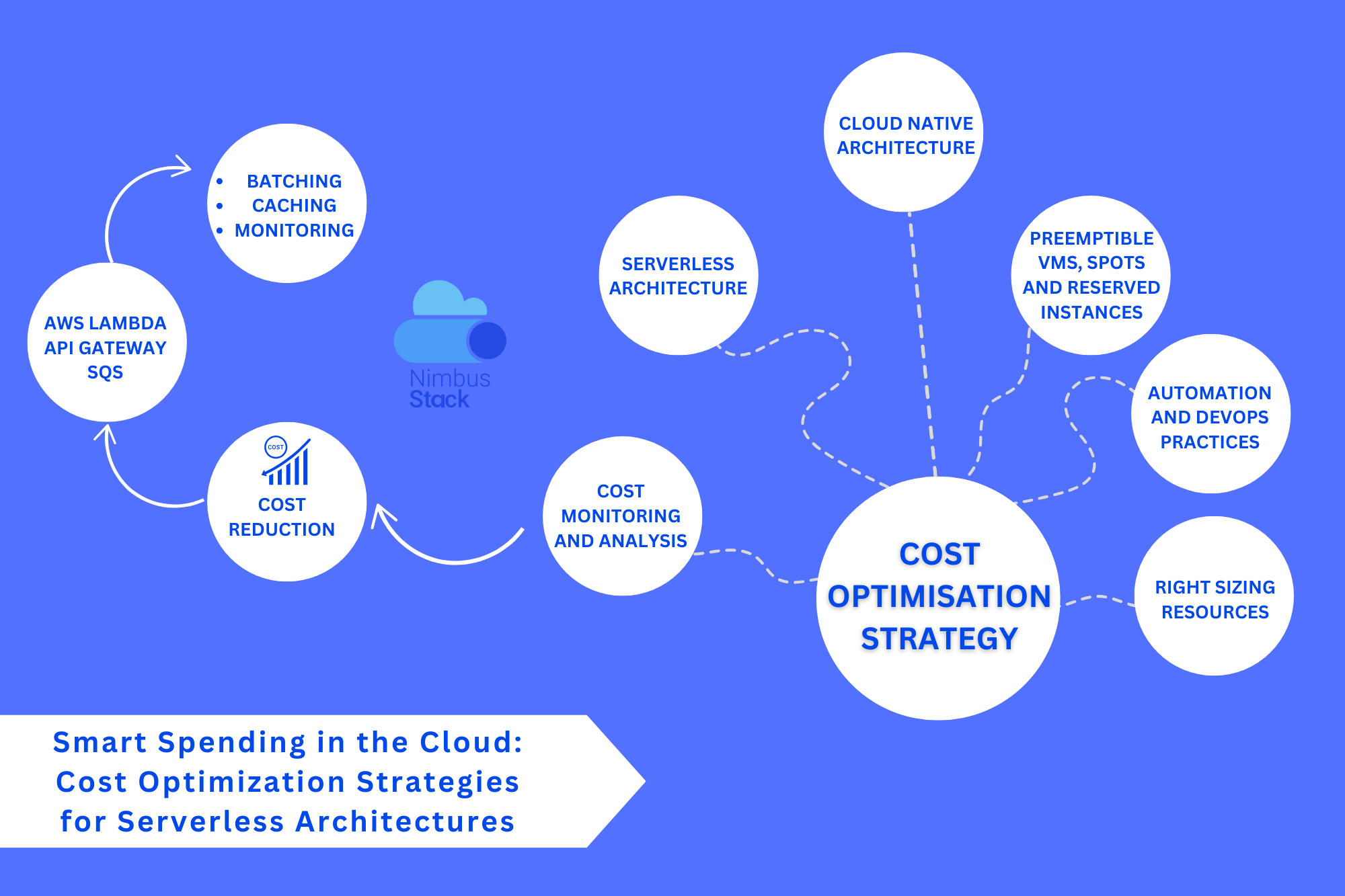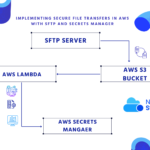Optimization Strategies for Serverless Architectures
Serverless architectures have transformed how we build and deploy applications, offering unparalleled scalability and reduced operational overhead. However, the “pay-as-you-go” model that makes serverless appealing can quickly lead to unexpected costs if not managed carefully. While you’re spared the headaches of provisioning servers, you still need a strategic approach to optimize costs.
In this blog, we’ll dive into actionable tips and techniques for minimizing costs in serverless applications. From smarter resource management to efficient coding practices, you’ll learn how to make the most of your serverless investment.
Why Focus on Cost Optimization for Serverless?
Serverless services like AWS Lambda, Azure Functions, and Google Cloud Functions charge based on resource usage, including compute time, memory allocation, and request volume. Without optimization, you might face:
- Excessive resource allocation: Paying for unused capacity.
- Inefficient workflows: Overpaying due to redundant or overly frequent operations.
- Hidden costs: Accumulated charges from dependencies like storage, APIs, or networking.
By adopting cost-saving strategies, you can ensure your serverless applications remain both high-performing and cost-effective.
1. Right-Size Your Functions
Memory Allocation Matters
Serverless platforms charge based on memory usage and execution time. Over-allocating memory increases costs, while under-allocating can lead to performance issues.
Optimization Tips:
- Profile Your Functions: Use tools like AWS Lambda Power Tuning to test different memory configurations and find the sweet spot between performance and cost.
- Dynamically Adjust Memory: For varying workloads, consider setting up automated memory adjustments using Infrastructure as Code (IaC) tools like Terraform.
2. Optimize Function Execution Time
The longer your function runs, the more you pay. Code efficiency directly impacts execution time and, consequently, your costs.
Strategies to Reduce Execution Time:
- Avoid Unnecessary Operations: Minimize API calls or database queries within a single function.
- Streamline Dependencies: Include only the libraries you need to reduce cold start times.
- Use Asynchronous Patterns: Offload time-intensive tasks (e.g., batch processing) to asynchronous workflows using services like AWS Step Functions or SQS.
3. Reduce Cold Starts
Cold starts occur when a serverless platform spins up a new instance to handle a request. While negligible for small workloads, frequent cold starts can add latency and cost over time.
Mitigation Techniques:
- Warm Up Your Functions: Use scheduled events (like AWS EventBridge or a pinging service) to keep your functions active.
- Choose Lightweight Runtimes: Languages like Node.js and Python have faster startup times compared to Java or .NET.
- Provisioned Concurrency: For critical functions, provisioned concurrency ensures pre-warmed instances are available, reducing cold start impact.
4. Consolidate and Reuse Functions
Excessive function fragmentation leads to more execution environments, which can inflate costs. Consolidating logic where possible reduces the number of functions your application needs.
Example:
- Instead of having separate Lambda functions for user authentication, data validation, and logging, combine these tasks into a single function for workflows with low complexity.
5. Leverage Event Filtering and Batching
Filter Unnecessary Events
For event-driven architectures, ensure you’re processing only the necessary events. For example, with Amazon S3 event notifications, use event filtering to trigger functions only for specific file types.
Batch Processing
Batching reduces the number of invocations, saving costs. For instance:
- Use Amazon SQS to queue events and trigger a Lambda function to process them in bulk.
- Aggregate logs or metrics before sending them to a monitoring service.
6. Monitor and Analyze Usage
Enable Detailed Metrics
- Use AWS CloudWatch, Azure Monitor, or Google Cloud Monitoring to track execution times, memory usage, and invocation frequency.
- Identify underutilized or frequently invoked functions to adjust configurations.
Cost Allocation Tags
Apply tags to categorize functions by project, team, or environment. This helps identify high-cost areas and allocate budgets more effectively.
7. Optimize API Gateway Costs
If you’re using API Gateway with your serverless functions, its request-based pricing can add up quickly.
Cost-Saving Measures:
- Enable Caching: Use API Gateway caching to reduce repeated calls to your backend functions.
- Switch to HTTP APIs: For simpler use cases, AWS HTTP APIs are cheaper than REST APIs.
- Minimize Payload Size: Optimize the data sent between the client and API Gateway.
8. Automate Cleanup of Unused Resources
Idle resources can generate unnecessary costs, especially in development environments. Automate the cleanup of unused resources like:
- Lambda versions or aliases.
- Old S3 objects.
- Unused API Gateway endpoints.
Tools like AWS Config and AWS Lambda can monitor and remove unused resources automatically.
9. Utilize Free Tiers and Spot Options
Free Tier Benefits
Take advantage of the free tier provided by serverless platforms, such as the 1 million free requests and 400,000 GB-seconds of compute time offered by AWS Lambda monthly.
Spot Pricing
For non-time-sensitive tasks, use spot instances in AWS Fargate or Google Cloud Run to lower costs.
10. Adopt Multi-Region Deployments Wisely
Deploying functions across multiple regions improves availability but can increase costs. Optimize multi-region deployments by:
- Using it only for critical workloads.
- Leveraging CDNs like AWS CloudFront for caching content globally, reducing cross-region invocations.
Real-World Example: Cost Optimization in E-Commerce
An e-commerce company faced escalating costs due to high Lambda function invocations during peak shopping hours. By profiling their functions, they:
- Optimized memory allocation, reducing over-provisioning.
- Batched order processing using SQS to minimize function executions.
- Enabled API Gateway caching, reducing repetitive backend calls.
The result? A 35% cost reduction while maintaining application performance.
Best Practices Recap
- Measure First, Optimize Second: Use monitoring tools to identify the highest-cost areas before making changes.
- Iterate Continuously: Serverless costs can change as workloads evolve; regular reviews are essential.
- Keep It Simple: Over-optimization can add complexity. Focus on impactful changes that maintain simplicity.
Conclusion
Serverless architectures offer the promise of cost efficiency, but achieving this requires intentional design and management. By following the strategies outlined here—right-sizing resources, optimizing execution times, and leveraging tools like event filtering and monitoring—you can significantly reduce costs without sacrificing performance.



